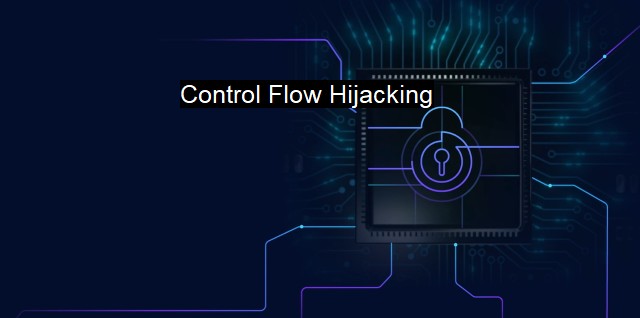What is Control Flow Hijacking?
Understanding Control Flow Hijacking: The Cyber Threat That Takes Over Your Software Programs
"Control Flow Hijacking" is a method employed by hackers in an effort to make a system behave against its intended purpose through a cyber-attack. At a higher level, it represents any strategy that manipulates a program or system's execution course. With this technique, an attacker maliciously interferes with the control flow of a program, which converts the program sequence defined by its creators into an irregular sequence.To understand control flow hijacking, it is essential to apprehend the concept of control flow within a program. Control flow, or flow of control, denotes the order in which the individual statements, instructions, or function calls of an imperative or declarative program get executed or evaluated. Software programs, under normal operation, have a standardized pattern of progression, which they adhere to every time a function is accomplished. Hijacking the control flow essentially means disrupting this usual pattern of sequence, most often for malicious intent.
Control flow hijacking is frequently achieved using Buffer Overflow exploits where the attacker intensely fills the buffer with data exceeding its capacity. In doing so, it can oftentimes overwrite the memory area allocated for control data such as function pointers, return addresses, and essential data. In most instances, these sorts of attacks can instigate denial of service due to software malfunction, allow execution of damaging instructions, or leak sensitive information.
Many other techniques exist in the realm of control flow hijacking, such as Return-Oriented-Programming (ROP) and Jump-Oriented Programming (JOP), where the attacker forms a chain of short instruction sequences present in the system, known as "gadgets". The attacker can already find these gadgets in the system's memory, and instead of injecting malicious code externally, they can arrange these gadgets to execute arbitrary malicious actions.
Another form is executing code from the data section commonly termed as "Data Execution". Here, an attacker might store maliciously exploitative data or instructions in a section of memory marked as non-executable and thereafter elevate its privileges to run the rogue data as executable code.
Control flow hijacking is a significant point of concern for cybersecurity experts and antivirus software creators. It is a highly sophisticated sort of intrusion, and it requires a deep understanding of software programming, the structure of executable code, and the platform’s runtime environment to identify and prevent.
To combat control flow hijacking, many defensive methods have been developed. Compiler-based defenses aim to block control hijacking attacks at compile time by imposing checks on control flow integrity. These methods include but are not limited to copying return addresses to safe locations, pad buffers, or reorder local variables. Other prevention methods involve software transformation, security-oriented programming languages, or operating system-level defenses.
Antivirus software also plays an essential role in mitigating the risks posed by control flow hijacking. They use technologies like heuristic analysis, sandboxing areas in a high-risk part of the system, and recognizing the signature patterns of known exploits to expose and quarantine potential control flow hijacking attempts.
Despite these measures, cyber-criminals continue to improve their techniques, demanding our computer systems also to evolve with new sawyer defenses. even though this battle between cybersecurity professionals and malicious hackers continues to advance, understanding and securing the control flow have never been more vital in preventing actively exploited software vulnerabilities such as control flow hijacking.

Control Flow Hijacking FAQs
What is control flow hijacking in cybersecurity?
Control Flow Hijacking is a type of attack in which an attacker takes control of a computer system or application by manipulating the execution flow of a program.How does control flow hijacking work?
Control Flow Hijacking works by manipulating a program's control flow by redirecting it to an attacker-controlled code. This is usually done by exploiting vulnerabilities in the program's code or using social engineering techniques to trick users into running malicious code.What are some examples of control flow hijacking attacks?
Some examples of control flow hijacking attacks include buffer overflow attacks, stack smashing attacks, and return-oriented programming (ROP) attacks. These attacks are often used to inject malicious code into a program, steal sensitive information, or execute arbitrary code on a computer system.How can antivirus help prevent control flow hijacking attacks?
Antivirus software can help prevent control flow hijacking attacks by detecting and blocking malicious code before it can execute on a system. This is done by using signature-based detection, heuristic analysis, and behavior-based detection techniques to identify and quarantine known and unknown threats. Additionally, antivirus software can also help by keeping systems up-to-date with the latest security patches and updates, which can help prevent known vulnerabilities from being exploited.| | A | | | B | | | C | | | D | | | E | | | F | | | G | | | H | | | I | | | J | | | K | | | L | | | M | |
| | N | | | O | | | P | | | Q | | | R | | | S | | | T | | | U | | | V | | | W | | | X | | | Y | | | Z | |
| | 1 | | | 2 | | | 3 | | | 4 | | | 7 | | | 8 | | |||||||